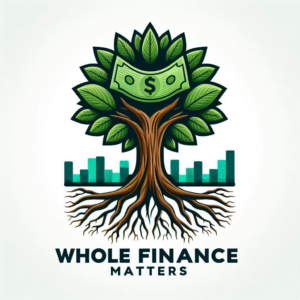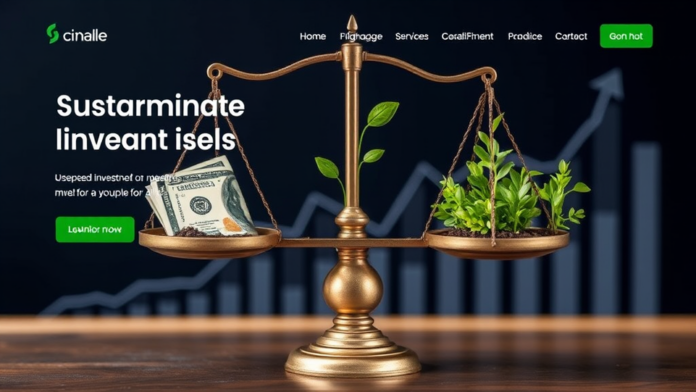Sustainable Investing: Balancing Profits and Environmental Impact
Definition and Principles
Sustainable investing refers to the integration of environmental, social, and governance (ESG) factors into investment decisions. This approach aims to generate long-term financial returns while promoting positive societal impact. Investors increasingly recognize that sustainable practices can lead to reduced risks and enhanced performance. It’s a win-win situation.
The principles of sustainable investing include a commitment to ethical practices and transparency. Investors often seek to support companies that prioritize sustainability in their operations. This can lead to a more resilient portfolio. Many investors are motivated by a desire to contribute to a healthier planet.
Key factors in sustainable investing are:
These elements help investors assess potential investments. They also provide a framework for evaluating risks. Understanding these principles is crucial for making informed decisions. It’s essential to align investments with personal values.
Investors should consider the long-term implications of their choices. Sustainable investing is not just a trend; it’s a necessity. The future of finance depends on responsible practices.
Historical Context and Evolution
The concept of sustainable investing has evolved significantly over the past few decades. Initially, it emerged from socially responsible investing (SRI), which focused on excluding certain industries, such as tobacco and firearms. This exclusionary approach laid the groundwork for a broader understanding of investment impacts. It’s fascinating how perspectives have shifted.
In the 1990s, the introduction of ESG criteria marked a pivotal change. Investors began to recognize that sustainability could enhance financial performance. This realization prompted a more integrated approach, where financial metrics and sustainability metrics coexist. Many investors now seek to understand the long-term viability of their investments.
The rise of impact investing further expanded the landscape. This strategy emphasizes generating measurable social and environmental benefits alongside financial returns. It’s a powerful movement. Today, institutional investors and asset managers increasingly incorporate sustainability into their portfolios. They understand that sustainable practices can mitigate risks and drive innovation.
The historical context of sustainable investing reflects a growing awareness of global challenges. Investors are now more informed and engaged. This evolution signifies a shift towards a more responsible financial ecosystem.
The Importance of Sustainable Investing in Retirement Planning
Long-term Financial Benefits
Sustainable investing offers significant long-term financial benefits, particularly in retirement planning. By focusing on companies with strong environmental, social, and governance (ESG) practices, investors can potentially enhance their portfolio performance. Research indicates that firms with robust sustainability practices often exhibit lower volatility. This stability is crucial for long-term investors.
Moreover, sustainable investments can lead to better risk management. Companies that prioritize sustainability are generally more resilient to regulatory changes and market shifts. This resilience can protect an investor’s capital over time. It’s essential to consider these factors when planning for retirement.
Key benefits of sustainable investing include:
Investors who adopt sustainable strategies may also benefit from increased consumer demand for responsible products. This trend can drive growth in sustainable companies. Many investors find this alignment with personal values rewarding. It’s a compelling reason to consider sustainwble options.
Incorporating sustainable investments into retirement plans can lead to a more secure financial future. Investors should evaluate their choices carefully. The long-term advantages are clear.
Aligning Investments with Personal Values
Aligning investments with personal values is increasingly important for investors. This alignment allows individuals to support companies that reflect their ethical beliefs. Many investors seek to make a positive impact through their financial choices. It’s a meaningful approach.
Investors often consider factors such as environmental sustainability, social justice, and corporate governance. By focusing on these areas, they can invest in businesses that prioritize responsible practices. This strategy not only fulfills personal values but can also enhance financial performance. It’s a smart move.
Research shows that companies with strong ESG practices tend to outperform their peers. This trend is particularly relevant for long-term investors. They can achieve both financial returns and personal satisfaction. Investors should evaluate their portfolios regularly.
Incorporating sustainable investments into retirement planning can lead to a more fulfilling financial journey. It’s essential to choose investments that resonate personally. This alignment can provide peace of mind. Ultimately, investing with purpose can lead to a more secure future.
Strategies for Sustainable Investing
ESG Criteria and Their Application
ESG criteria encompass environmental, social, and governance factors that investors use to evaluate potential investments. These criteria help assess a company’s sustainability and ethical impact. Investors increasingly rely on these metrics to make informed decisions. It’s a critical approach.
The application of ESG criteria involves analyzing various aspects of a company’s operations. For instance, environmental factors may include carbon emissions, resource usage, and waste management practices. Social criteria often focus on labor practices, community engagement, and diversity. Governance factors assess board structure, executive compensation, and shareholder rights. Each factor plays a vital role.
Investors can employ several strategies when integrating ESG criteria into their portfolios. One common approach is negative screening, which excludes companies that do not meet specific ethical standards. Another strategy is positive screening, where investors actively seek out companies with strong ESG performance. This proactive method can yield significant benefits.
Additionally, impact investing focuses on generating measurable social and environmental outcomes alongside financial returns. This strategy aligns well with personal values. Investors should regularly review their portfolios to ensure alignment with their ESG goals. It’s essential for long-term success.
Impact Investing vs. Traditional Investing
Impact investing and traditional investing represent two distinct approaches to capital allocation. Traditional investing primarily focuses on maximizing financial returns without necessarily considering social or environmental outcomes. This method often prioritizes short-term gains. It’s a common practice.
In contrast, impact investing seeks to generate measurable social and environmental benefits alongside financial returns. Investors in this space actively choose projects that align with their values. This dual focus can lead to sustainable growth. Many investors find this approach fulfilling.
Key differences between the two methods include:
Investors should evaluate their goals carefully. Understanding these differences can guide investment choices. It’s essential to consider both financial and ethical implications. This awareness can lead to more informed decisions. Ultimately, aligning investments with personal values can enhance satisfaction.
Challenges and Considerations
Market Volatility and Risk Assessment
Market volatility presents significant challenges for investors, particularly in the context of sustainable investing. Fluctuations in stock prices can create uncertainty, making it difficult to assess the long-term viability of investments. This uncertainty can lead to emotional decision-making. It’s important to stay informed.
Risk assessment is crucial in navigating these market dynamics. Investors should consider both financial and non-financial risks associated with their portfolios. Factors such as regulatory changes, environmental impacts, and social trends can influence performance. Understanding these risks is essential for informed decision-making.
Key considerations for risk assessment include:
Investors must remain vigilant and adaptable. Regular portfolio reviews can help identify potential vulnerabilities. It’s essential to align investment strategies with risk tolerance. This alignment can mitigate the impact of market volatility. Ultimately, a proactive approach can enhance long-term investment success.
Regulatory and Reporting Standards
Regulatory and reporting standards play a crucial role in sustainable investing. These standards ensure transparency and accountability among companies regarding their environmental, social, and governance practices. Investors rely on this information to make informed decisions. It’s essential for trust.
However, navigating these regulations can be challenging. Different jurisdictions may have varying requirements, leading to confusion. Companies may struggle to comply with multiple standards. This complexity can hinder effective reporting. Investors should be aware of these challenges.
Key considerations include:
Investors must evaluate the quality of the information provided. Inconsistent reporting can obscure a company’s true sustainability performance. It’s vital to seek out companies that prioritize robust reporting practices. This diligence can lead to better investment outcomes. Ultimately, awareness of regulatory standards can enhance decision-making in sustainable investing.

